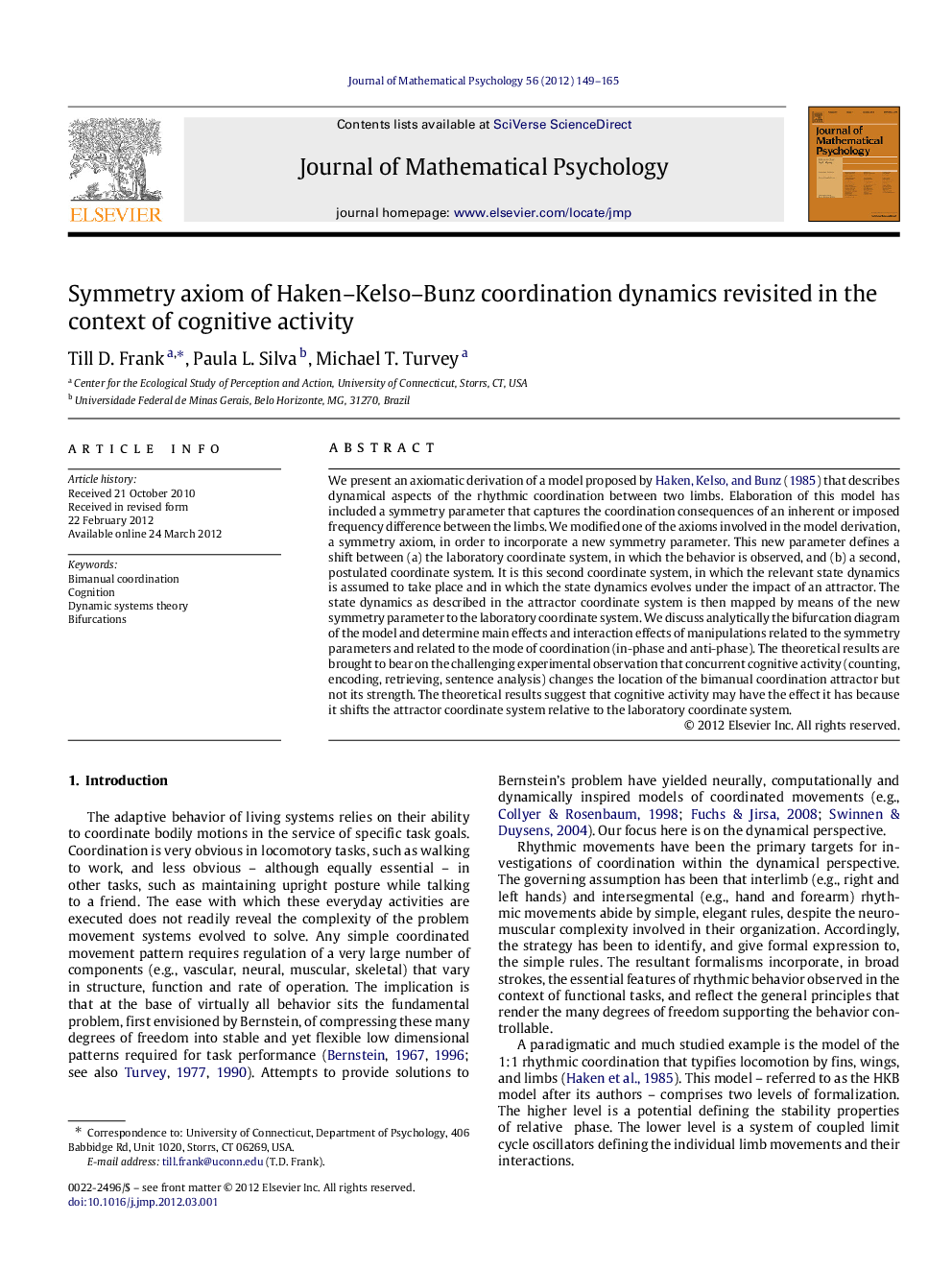| کد مقاله | کد نشریه | سال انتشار | مقاله انگلیسی | نسخه تمام متن |
|---|---|---|---|---|
| 326784 | 542551 | 2012 | 17 صفحه PDF | دانلود رایگان |

We present an axiomatic derivation of a model proposed by Haken, Kelso, and Bunz (1985) that describes dynamical aspects of the rhythmic coordination between two limbs. Elaboration of this model has included a symmetry parameter that captures the coordination consequences of an inherent or imposed frequency difference between the limbs. We modified one of the axioms involved in the model derivation, a symmetry axiom, in order to incorporate a new symmetry parameter. This new parameter defines a shift between (a) the laboratory coordinate system, in which the behavior is observed, and (b) a second, postulated coordinate system. It is this second coordinate system, in which the relevant state dynamics is assumed to take place and in which the state dynamics evolves under the impact of an attractor. The state dynamics as described in the attractor coordinate system is then mapped by means of the new symmetry parameter to the laboratory coordinate system. We discuss analytically the bifurcation diagram of the model and determine main effects and interaction effects of manipulations related to the symmetry parameters and related to the mode of coordination (in-phase and anti-phase). The theoretical results are brought to bear on the challenging experimental observation that concurrent cognitive activity (counting, encoding, retrieving, sentence analysis) changes the location of the bimanual coordination attractor but not its strength. The theoretical results suggest that cognitive activity may have the effect it has because it shifts the attractor coordinate system relative to the laboratory coordinate system.
► An axiomatic approach for perception–action–cognition systems is presented.
► A novel symmetry parameter is introduced that affects performance mean tendency but not stability.
► Cognitive activity may affect the symmetry parameter.
Journal: Journal of Mathematical Psychology - Volume 56, Issue 3, June 2012, Pages 149–165